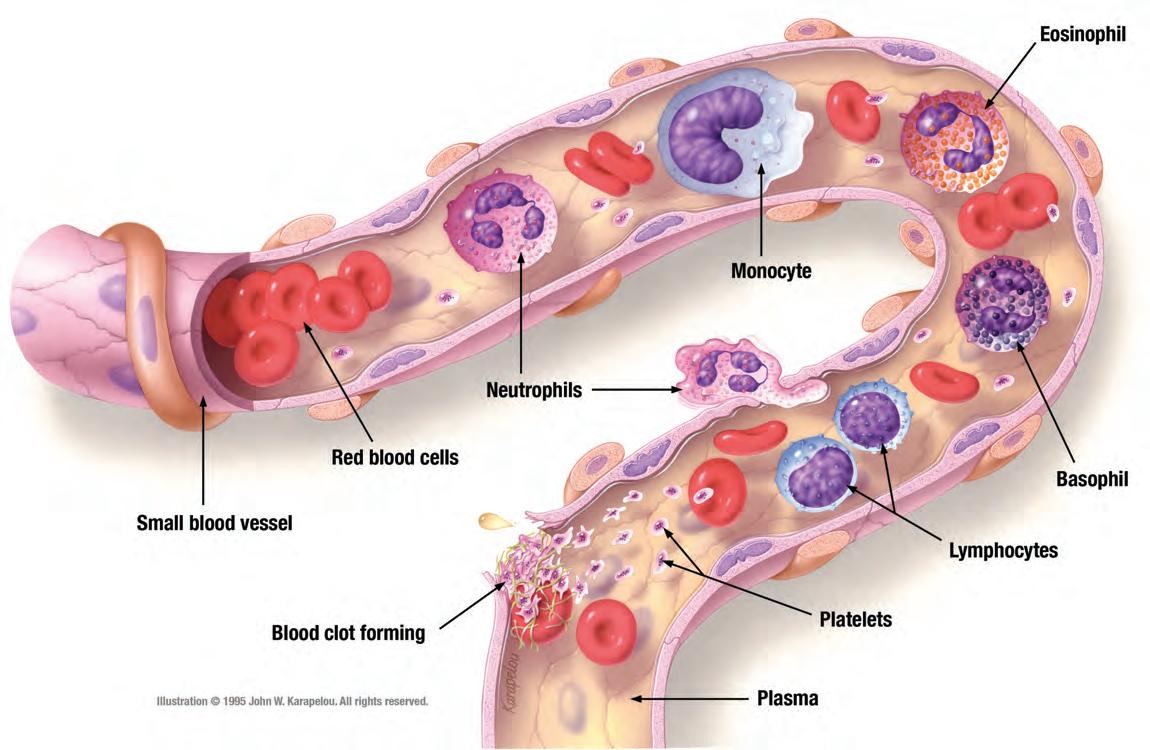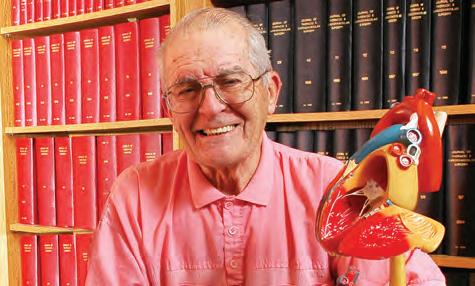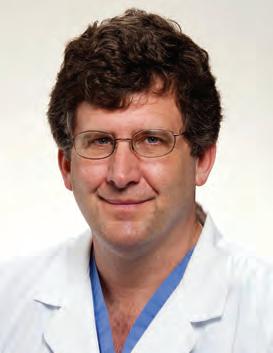Medicine & Surgery
Successful Surgical Outcomes




“Medical science continues to discover improved methods of treatment. Our patients deserve the best, including novel approaches and increased options.”
Transfusion‑Free
William G. Cioffi, MD, Surgeon‑in‑Chief R hode Island Hospital and The Miriam Hospital
An Overview
Featured Articles
William G. Cioffi, MD
Surgeon‑in‑Chief
Rhode Island Hospital and The Miriam Hospital
Curtis Doberstein, MD
Interim Chief of Neurosurgery
Rhode Island Hospital and The Miriam Hospital
Phillip Lucas, MD
Orthopedic Surgeon
Barbara Riley, RN
Chief Nursing Officer
Rhode Island Hospital/Hasbro Children’s Hospital
Frank Sellke, MD
Chief of Cardiothoracic Surgery
Rhode Island Hospital and The Miriam Hospital
Arun Singh, MD
Cardiothoracic Surgeon
Comprehensive Cancer Center
James Butera, MD Medical Director
Maria Constantinou, MD
Howard Safran, MD
Eric Winer, MD
Gastroenterology
Fadlallah Habr, MD
Hasbro Children’s Hospital
Pediatric Hematology/Oncology
Rachel Altura, MD
Anjulika Chawla, MD
Interim Director
Douglas Harrison, MD
Jennifer Welch, MD
Hasbro Children’s Hospital
Pediatric Surgery
Arlet Kurkchubasche, MD
Francois Luks, MD
Christopher Muratore, MD
The Tomorrow Fund Clinic
Edwin N. Forman, MD Founder
Viewpoints
Arthur Bert, MD
Anesthesiologist in Chief
Rhode Island Hospital and The Miriam Hospital
Christopher Born, MD
Chief of Orthopedic Trauma
Daniel Levine, MD
Director, Heart Failure Program
Stephanie Lueckel, MD
Medical Director, Transfusion Free Medicine & Surgery
Paul Morrissey, MD Program Director, Division of Organ Transplantation
Peter Quesenberry, MD
Director, Division of Hematology/Oncology
Rhode Island Hospital and The Miriam Hospital
Fred J. Schiffman, MD
Associate Physician‑in‑Chief, The Miriam Hospital
Joseph Sweeney, MD, FACP, FRCPath
Director, Coagulation and Transfusion Medicine

Rhode Island Hospital and The Miriam Hospital
Dominick Tammaro, MD
Director, Internal Medicine Residency Program
• • • • •
About This Publication
It is my pleasure to introduce the Transfusion‑Free Medicine & Surgery publication, the result of over 5 years’ successes at Rhode Island Hospital. This was first released in 2011 and I am pleased to now make this accessible online. There is an ever‑increasing interest in the available treatment options that can reduce or avert donor blood transfusion. However, patients continue to be perplexed as to what options may be appropriate and the benefits of each. There are likewise many questions related to patient outcomes and physician support.
In general, transfusion‑free medicine and surgery advocates multimodality and multidisciplinary approaches to patient care. For example, all members of a surgical team (surgeon, anesthesiologist, perfusionist, nurse, etc.) work collectively to successfully reduce the use of blood and blood products. The significant advantage we enjoy is the capability to identify patients prior to surgery and then successfully coordinate their care from pre‑admission status to discharge and follow‑up. Of course every surgery and every patient is different, with each presenting unique challenges. However, our physicians strive to accommodate patient preferences, which may include altering their techniques for certain procedures, achieving consistently favorable outcomes. We have been able to reduce blood product usage, which has also resulted in ongoing cost savings.
With this publication, I have endeavored to address several topics of interest among physicians and patients. Two of the articles: “but what if I need blood?” and “Hasbro Children's Hospital Pediatric Surgery” provide a more comprehensive analysis whereas “Understanding Surgical Options” and “Strategies—A Quick Look” both provide a concise review. I collaborated with several physicians to report on the successes we have achieved, and the various techniques that are utilized. My one regret is not being able to include many more of our outstanding physicians and surgeons who continue to do so much for our patients.
It is my hope that this information will be beneficial to you, and that this publication may serve as a helpful resource. If you have any questions, please send them along to transfreemed@lifespan.org.
I welcome your comments—
Kevin T. Wright Program Manager Editor
Rhode Island Hospital/Hasbro Children’s Hospital A Lifespan Partner 2 Surgeon‑in‑Chief William G. Cioffi, MD 3 4 Exceeding Patients' Expectations Barbara Riley, RN, Chief Nursing Officer 5 Basic Blood Components—Illustrated 6 7 Blood — The Liquid Tissue ............................................................... 8 9 …but what if I need blood? 10 Increasing Clinical Awareness 11 Cardiothoracic Surgery at Rhode Island Hospital and The Miriam Hospital 12 Letters from Patients 13 Viewpoints 14 ‑ 15 Arthur Bert, MD Christopher Born, MD Daniel Levine, MD Stephanie Lueckel, MD Paul Morrissey, MD Peter Quesenberry, MD Fred Schiffman, MD Joseph Sweeney, MD Dominick Tammaro, MD “If you need it, go for it… Neurosurgery Patient Isabelle Verducci 16 Restoring Quality of Life Orthopedic Success for Deborah Stark 17 The Comprehensive Cancer Center Wife, Mother and Cancer Survivor Patricia Betrix ................. 18 Hasbro Children's Hospital Pediatric Surgery 19 Hasbro Children’s Hospital Pediatric Hematology/Oncology The Tomorrow Fund Clinic 20 Understanding Surgical Options 21 The Joint Commission –Patient Blood Management Performance Measures 22 Prescribing Prophylactic Plasma or Platelets 23 Patient Checklist 24 Strategies — A Quick Look ................................................................... 25 Did You Know? 26
I wish to acknowledge Ronald A. DeLellis, MD, Pathologist‑in‑Chief (Retired), for his support and direction.
Contents • • • • • © 2011, 2014 Transfusion‑Free Medicine & Surgery, Rhode Island Hospital. All rights reserved.
A Conversation with Surgeon‑in‑Chief William G. Cioffi, MD, FACS

“A decision to transfuse should be considered as seriously as the decision to operate,” says Cioffi. Essentially, he says it is “managing the risk benefit equation of a drug.” That comparison may be surprising for some to read, yet it accurately reflects a growing understanding shared among clinicians. We discussed his experience and views on blood management protocols and the leadership role of our hospitals in the New England area:
Dr. Cioffi, you have lectured on the benefits of lowering the transfusion trigger level–
It is important that we continue to educate health care providers on the risk and benefits of blood transfusion. Although there is no doubt that transfusion provided at the appropriate time can be lifesaving, it is imperative that we constantly reanalyze our indications for transfusion.
Why should surgeons reduce their dependency on blood and blood products?
Surgeon‑in‑Chief William G. Cioffi, MD, FACS
Rhode Island Hospital and The Miriam Hospital
J. Murray Beardsley Professor and Chair, Department of Surgery
The Warren Alpert Medical School of Brown University
William Cioffi, MD, has a decidedly specialized and very serious responsibility that requires not only extensive surgical experience, but the ability to lead by example, stimulating a high level of efficiency among fellow surgeons. It has been most encouraging to see this demonstrated first hand, yet even more so to hear from the patients who have benefitted from his care. Cioffi previously served as chief of trauma, an expertise that is particularly important at our Level 1 trauma hospital. As a member of a teaching hospital, he is also responsible for training the next generation of surgeons. He has actively cared for burn patients, an interest about which he has lectured both nationally and internationally in addition to the writing of numerous articles and book chapters on the care of trauma and burn victims.
Cioffi encourages surgeons to avoid blood transfusion if at all possible. Why? Because medical literature has shown an increased risk for morbidity and mortality associated with blood transfusion. Accordingly, as an expert in the care of critically ill surgical patients, he utilizes blood conservation techniques and can therefore provide valuable firsthand experience. His continuing research on improving surgical technique also aids in the treatment of patients. This approach to surgical care is not something new for Cioffi, having successfully managed difficult cases for many years.
Although blood transfusion, when used appropriately, is a very important treatment, the negative effects of blood transfusion cannot be ignored. We have learned over the past two decades that patients can safely tolerate a much lower hemoglobin level than previously thought. Reconsidering our trigger for transfusion of blood products should lead to a decrease in product utilization and minimization of the potential risk of blood transfusion.
When did you first utilize blood conservation techniques?
My first experience with blood conservation techniques was in 1986 when I cared for a burn patient who had religious objections to transfusion.
How do you approach these types of surgeries?
These surgeries, in reality, are not approached any differently than any other surgical procedure. As surgeons we constantly attempt to minimize blood loss. However, the preoperative planning for these patients may be a bit different in that we can improve the patient’s blood count prior to surgery, and manage blood loss during surgery. For example, this could include the administration of drugs to increase red cell concentration prior to surgery, and utilizing a cell salvage machine to recover red cells that are otherwise lost during a procedure.
Continued on page 4
Transfusion Free Medicine & Surgery, 593 Eddy Street, Providence, RI 02903 Lifespan.org 3
Kevin T. Wright and William G. Cioffi, MD
• • • • •
A Conversation with Surgeon‑in‑Chief William
G. Cioffi, MD
What techniques do you encourage among surgeons?
The operative techniques encouraged among surgeons would be to minimize blood loss by altering one’s surgical technique to accomplish this rather easy task.
Have you encountered especially difficult cases?
I have taken care of several patients who posed some significant challenges. One was an older woman with renal dysfunction who had had multiple lower gastrointestinal bleeding episodes. She required surgical intervention but started with a hemoglobin of just 6 g/dL. Since she was not acutely bleeding, and she had no objections to the use of erythropoietin; she was treated with erythropoietin preoperatively to restore her hemoglobin to near normal levels prior to surgical intervention. Her operation proceeded without difficulty and with minimal blood loss.
What about emergency procedures?
I have been involved in an emergency case in which a woman with religious reasons for refusing blood products had an acute lower GI bleed from hemorrhoids. We entered the operating room with a hemoglobin of only 4 g/dL. Obviously this patient had no margin for error or for delaying surgery and she was taken to the OR early one morning. The surgery went well, her bleeding was arrested, and she had an excellent outcome.
What have you observed as to morbidity/mortality rates when utilizing a restrictive transfusion strategy?
The first thing that I can state is that using a restrictive transfusion strategy does not result in increased complications or mortality. Rather, the literature fairly strongly shows that a restrictive transfusion strategy actually decreases complication rates, the late recurrence of certain cancers, and has an impact on reducing mortality in some subsets of critically ill patients.
And yet there is a continuing reluctance among some?
I think this reluctance is secondary to two things: the first is not understanding the current data surrounding the risks and benefits of transfusion practices; the second is concerning patients with cardiac disease. It is pretty easy to understand why one might expect that a patient with significant coronary artery disease may not tolerate a lower hemoglobin level. Yet, there have been several randomized trials showing that these patients tolerate a lower transfusion trigger than one might expect.
Continued from page 3
What do you see as the greatest challenge/barrier for surgeons?
Surgeons inherently want what is best for their patients. When a patient is bleeding, our natural reaction is to provide blood products. We also want to be sure that we minimize our complications from such things as heart and lung comorbidities. I think that many of us, as we try to individualize our therapy, overestimate the risk of a lower transfusion trigger as it relates to a specific patient.
How important is communication between physician and patient?
This is an essential part of the physician/patient relationship. I have found that by being accessible to my patients, taking the time to listen and address their concerns, while not being hurried, lessens their fears and builds a trust that is crucial. It is a rapport or connection that really we all strive for, and it is necessary for the patient to feel that we truly care.
As a teaching hospital, what impact can we have on our future surgeons?
I think as a teaching hospital we can teach all physicians, whether surgeons or not, about the risk and benefits of transfusions. As I stated before, the benefits of transfusions are easy to see. It is the unintended consequences of blood product administration that we need to constantly remind ourselves.
Dr. Cioffi, as Rhode Island Hospital is one of the largest academic medical centers in southeastern New England, what are your observations on our expanding role?
We have a role in the community to constantly improve the health care we provide for our patients. This includes not only within our own institution, but providing an educational venue and set of services such as the Transfusion‑Free Medicine & Surgery program as a societal benefit.
Rhode Island Hospital/Hasbro Children’s Hospital A Lifespan Partner 4
Exceeding Patients' Expectations
Barbara Riley, RN, MS, NEA-BC Senior Vice President and Chief Nursing Officer Rhode Island Hospital/Hasbro Children’s Hospital

They are on the front lines every day, often the first person you see and surely the very last to whom you say good night — your nurse. Rhode Island Hospital employs more than 1,500 registered nurses, and Chief Nursing Officer Barbara Riley has quite a task. She oversees the department of nursing, which encompasses the emergency departments, perioperative services, adult inpatient services and the pediatric division. A high level of experience and expertise is required to handle what some might describe as a daunting assignment. Yet Riley maintains her trademark smile and pleasantness which are fundamental to her success.
“The world has changed in some 31 years as we consider the increase of infectious disease coupled with public awareness,” says Riley, discussing what has taken place in health care during her career. Ever more so today “people need choices and we need to be responsive, providing the best advice available.” This is certainly not easy when patients are bombarded with so much information.
In her position Riley is responsible for strategic planning, nursing practice and quality. “We are at the forefront in medicine and nursing” which affords across‑the‑board improvements in the delivery of care. Consider for example pressure ulcers or pressure sores, a cause of significant morbidity and mortality. Riley has taken a personal interest in improvement in the quality of care and observed in a recent “2½ year look back that the rate of reduction exceeded expectations.” Included among the goals for quality improvement are “elderly fall prevention as well as infection prevention” on which she has increased the focus. It is not surprising then that nurse development is a priority for Riley, who says, “maintaining an environment of openness, which of necessity includes not only the importance of input, but the autonomy of nurses and then developing the expertise of our nurses are essential to the providing of expert care.”
Increasing the medical and surgical options for patients is one of the goals advocated by the transfusion‑free program. “There is a science and social importance involved and transfusion‑free medicine accomplishes both,” says Riley. “For example, the provision of health care includes meeting patient expectations, and medical science supports the strategies advanced by transfusion‑free medicine. It is a new vista for managing surgical trauma, developed by means of strategies which also provide interesting training for nurses.”
“My vision for nursing is a higher level of excellence which is achievable because we have very smart people who want to excel,” says Riley. For example, Rhode Island Hospital has three times received a Beacon Award for Excellence from the American Association of Critical Care Nurses (AACN), the most prestigious award possible for nursing. The hospital’s first Beacon Award was given to the cardiothoracic intensive care unit in 2010 and 2011: this is the first adult unit to receive such an honor in New England. A second Beacon Award was given to the medical surgical unit on the third floor of the Cooperative Care Center, unit CCC3, the only medical surgical unit in New England to receive this award. A third Beacon Award was given to Hasbro Children’s Hospital pediatric intensive care unit (PICU), one of only three in New England with this distinction. Consider that the AACN measures hospitals in key areas such as education, training and mentoring; research and evidence‑based practice; patient outcomes; and providing a superior healing environment. This recognition is further “proof of our leadership that validates the efforts of all.”
Rhode Island Hospital employs more than 1,500 registered nurses. “My vision for nursing is a higher level of excellence which is achievable because we have very smart people who want to excel.”
“Part of my job is to recognize the value of the contribution our nurses make. I have never been satisfied with a status quo approach, and when observing the performance of our staff, there is such excellence which will only make us better as an institution. Our patients deserve this, and I am committed to setting the bar higher and accomplishing this goal.”
Transfusion Free Medicine & Surgery, 593 Eddy Street, Providence, RI 02903 Lifespan.org
5
• • • • •
Barbara Riley, RN
Basic Blood Components—Illustrated

Blood travels through a massive circulatory network on a nonstop journey throughout the body. There are several different types of blood cells and on this page you are provided an illustrated view. This can be a helpful reference when speaking with your physician or to simply gain a better understanding of the blood components.
Let’s now take a look inside a small blood vessel—
Red blood cells are the most numerous type of blood cell and are the principal means of delivering oxygen to the body tissues. A single drop of blood contains millions of red blood cells which have an average life of 120 days.
White blood cells (WBC) serve an entirely different purpose—they are the defenders against disease. This is accomplished by their nonstop monitoring of the bloodstream; when a germ or infectious agent is detected, WBCs respond to prevent the spread of disease. There are five major types and following each type a brief description is provided:
Neutrophils – the most numerous of WBCs, they increase in number at the time of infection. These cells move out of the bloodstream into infected tissue to defend against attack. The appearance of pus is evidence of their presence during infection. At times of stress, their numbers increase; unhealthy habits also cause an increase.
Lymphocytes – identify germs and produce antibodies or immunoglobulins that target them. They are comprised of three main types according to function: T‑lymphocytes; B‑lymphocytes; and NK or natural killer cells.
Monocytes – the largest WBC and distinguished by their “U” or kidney bean‑shaped nucleus. These cells can move out of the bloodstream into infected tissue to defend against attack. Viral infections, chronic inflammation, and stress will increase their number.
Eosinophils – produce toxic proteins that combat viral infections and parasitic infections such as worms. They also release toxins in response to allergens. They can be found in large numbers in the gastrointestinal tract.
Basophils – represent approximately 1% of the total white blood cell count and when activated they can release histamine, serotonin, and other chemicals. An allergic reaction is associated with the function of these cells.
Platelets are irregular disc‑shaped fragments that are present in blood. When bleeding occurs, platelets collect at the site to block the seepage of blood by forming a “plug”. Once activated, they change shape and, becoming sticky, eventually seal the damage to stop the bleeding.
Plasma is a straw‑colored, clear liquid that is approximately 91% water and contains three major proteins: albumin, fibrinogen, and globulins as well as dissolved salts and minerals. Plasma makes up more than half of the blood's volume, providing transportation for all blood cells.
Electron microscope image, color enhanced: red cells, white cells in blue, platelets and fibrin strands in green
copyright Dennis Kunkel Microscopy, Inc.
 Image
Image
By means of the electron microscope, we are able to see that coursing through our veins is an innumerable number of blood cells. At any given time in a normal healthy adult, some 25 trillion red blood cells, 1.5 trillion platelets, and 25 billion white blood cells are moving through the circulatory system. Indeed, approximately 8% of an average adult’s total body weight is blood.
Blood — The Liquid Tissue
The process of blood cell development is called hematopoiesis and occurs in the bone marrow. Red blood cells are called erythrocytes, white cells leukocytes and platelets thrombocytes. Red blood cells carry the hemoglobin molecule necessary for the oxygen delivery to all organs and tissues; red cells account for up to 45% of the blood’s volume. Under a microscope, they appear as round discs with a unique dual inward curve (biconcave) that increases the cell’s surface area; this helps the distribution of oxygen and carbon dioxide. Some white blood cells defend the body by consuming invading germs. Platelets come from a larger cell in the bone marrow known as a megakaryocyte, and in time these cells break up into very small cell fragments necessary for clotting. Plasma, the liquid component of blood in which the cells are floating, can replenish or absorb water from tissues and without it blood vessels would simply collapse—its continuous flow maintains blood pressure and circulation throughout the body. Albumin is the protein of the highest concentration in plasma and it binds to hormones and other substances in the blood, making possible their transportation.
For the human body to function properly it must maintain an internal balance called homeostasis. How is this accomplished? Communication is the key and one way communication is accomplished is through the action of hormones in the bloodstream. Hormones (chemical transmitters) journey from point A to point B, that is, from organ to organ throughout the body and communicate necessary information. For example, one hormone, erythropoietin (EPO), regulates red blood cell production. If a decrease in blood oxygen level is detected, EPO stimulates the bone marrow to produce more red cells, resulting in a beneficial increase of oxygen‑carrying capacity.
Most people know that the heart, pumping non‑stop every minute of every day, keeps blood circulating throughout the body. Physician William Harvey (1578‑1657) is credited as being the first to accurately demonstrate the circulation of blood pumped by the heart. In fact, the heart beats some 2.5 billion times in an average lifetime, as blood travels the entire length of the circulatory system which is approximately 60,000 miles.
There are different kinds of tissue in the body. One is connective tissue; this tissue type provides a support structure necessary for all tissues and organs to function properly. Blood is a type of connective tissue because as a transport system, it plays a vital role in the support of the body. This includes facilitating communication or chemical reactions, supporting a defense system, the white blood cells, and transporting its main cellular component, the red blood cell. Blood, however, is a unique kind of tissue: it is the body’s only liquid tissue.
For several decades the so called “10/30” rule determined transfusion practice among clinicians. This rule generally meant that a hemoglobin level of 10 g/dL and a hematocrit of 30 was the trigger level for a blood transfusion. It was not until the 1980s that this practice began to be reexamined [1] There yet remains considerable misunderstanding as to what constitutes the need for blood transfusion. [2] For example, does anemia itself require allogeneic or donor blood transfusion? If a patient is experiencing unanticipated blood loss, even when significant, is blood transfusion required?
First, it is important to note that clinicians are constantly impressed by the power of the body to compensate for anemia. Also, options are available to patients in both of the situations mentioned above. Joseph Sweeney, MD, director of Coagulation and Transfusion Services, Rhode Island Hospital and The Miriam Hospital, says, “No rigid criteria are universally applicable, and each situation requires the exercise of clinical judgment.” Therefore, in cases of anemia the first step is correct patient assessment. That is to say, clinicians must determine the cause of anemia also how well the patient is tolerating the anemia.
Trauma surgeon Shea Gregg, MD, the previous medical director, Transfusion Free Medicine & Surgery, says, “Anemia is the end result of a variety of disorders and there are several simple blood tests that can help elucidate the underlying cause.” What options are available for treatment of anemia? Surgeon Paul Morrissey, MD, program director, Division of Organ Transplantation, says, “Correcting anemia with erythropoietic agents and appropriate iron replacement can limit transfusions and improve a patient’s energy, activity and quality of life.”
Patients can tolerate anemia, even when significant, better than what may at first be realized. Sweeney says, “In young patients with ability for cardiac compensation, acute blood loss to a hemoglobin as low as 5 g/dL may be well tolerated.” Pediatric surgeon Christopher Muratore, MD, says that “blood transfusion can be reduced” even during potential high blood loss situations by avoiding an “arbitrary hemoglobin value together with close patient assessment.” Adult orthopedic surgeon Phillip Lucas, MD, says that in his practice “most patients tolerate a hemoglobin level of from 6 g/dL to 10 g/dL” while adding that such patients should be monitored for “physiologic signs of inadequate oxygenation.”
Our physicians have cared for major blood loss cases without blood transfusion, as there are multiple techniques available. For example Gregg says “cautery instruments that aid in surgical hemostasis, topical agents that stimulate the clotting of blood, the use of packing/pressure to areas of hemorrhage and cell salvage or ‘cell saver’ machines.”
Careful patient assessment is also important during the post operative period. Arthur Bert, MD, anesthesiologist‑in‑chief, Rhode Island Hospital and The Miriam Hospital, comments on several needs including “close patient monitoring and addressing circumstances that contribute to bleeding. There are obvious factors such as body temperature, avoiding hypothermia, limiting blood draws, and utilizing pharmacologic interventions to address continued bleeding or coagulopathy.” Gregg adds that “the possible administration of medications to enhance red blood cell production may be addressed.”
Edwin N. Forman, MD, a previous director of the pediatric hematology/oncology program at Hasbro Children’s Hospital, says, “It has been demonstrated that patients with chronic anemia can tolerate very low hemoglobin levels, in rare cases as low as 3.5 g/dL grams without increased mortality.” When addressing the question of actual need for transfusion he says, “No medical consensus exists: there is no magic hemoglobin or platelet “trigger” value that mandates a transfusion and cases must be individualized.” Sweeney has long observed that red blood cell (RBC) transfusion “is an important predictor of postoperative length of stay and, therefore, a conservative approach to avoid RBC transfusion, within reason, merits consideration.” Accordingly, when it comes to the potential need for blood transfusion, Sweeney says: “The decision to transfuse any blood product is based on the clinical circumstances and current or recent historical laboratory data.” Unfortunately though, such decisions, he says, “often represent nothing more than the opinion of the treating physician based on his/her experience, experimental, so called 'eminence' based medicine.”
As here discussed, there are a variety of treatment options that can limit blood loss and avert blood transfusion; our physicians make application of these in their clinical practice. Likewise advance planning, meticulous surgical techniques and being judicious with regard to transfusion minimize patient exposure to blood products. Bert says that “with the possible exception of severe acute blood loss, banked blood is rarely indicated.”
Rhode Island Hospital/Hasbro Children’s Hospital A Lifespan Partner
10
“…but what if I need blood?”
Instead of asking the question “what if I need blood,” we should more readily consider the multiple options available when a patient is anemic or otherwise experiencing unex pected blood loss. Of course, for elective surgical procedures, the challenges are reduced as there is generally ample time to incorporate various strategies even for complicated
References:
procedures. Blood conservation and transfusion‑free care are safe and effective in the medical and surgical treatment of patients. These options also reduce the dependency on blood and blood products while concurrently increasing patient satisfaction.
Increasing Clinical Awareness
The lag between the discovery of more effective forms of treatment and their incorporation into routine patient care averages 17 years. [1]
The “Transfusion Requirements in Critical Care” (TRICC) trial [2] was published in the New England Journal of Medicine in February, 1999. The TRICC trial was a multicenter randomized controlled trial (RCT) providing Level 1 evidence, considered the gold standard in medical science. This landmark study [3] compared patient outcomes derived from the results of two different transfusion strategies: a liberal strategy (transfusion trigger of 10 g/dL) versus a restrictive strategy (transfusion trigger of 7 g/dL). The restrictive strategy group received 54% fewer red blood cell (RBC) units than the liberal strategy group, and 33% of this group avoided donor RBC transfusion completely. All patients in the liberal strategy group received donor blood transfusion. A restrictive strategy was found to be at least as effective as the liberal strategy with respect to mortality. Notably, in the subgroup analyses among the patients who were less than 55 years of age, and who had lower Apache scores (severity of disease index), the results showed that patients in the restrictive strategy group had significantly better survival outcomes.
Both the potential benefits of transfusion and relative dangers of transfusion are clearly more evident today. It has been
References:
1. Balas, 2001; Institute of Medicine, 2003b
2. Hebert PC, Wells G, Blajchman MA, et al. "A multicenter, randomized, controlled clinical trial of transfusion requirements in critical care." N Engl J Med 1999;340:409 417
3. Blajchman MA. "Landmark studies that have changed the practice of transfusion medicine." Transfusion 2005;45(9):1523 30.
discovered that blood transfusion is associated with worse clinical outcomes, yet many clinicians adhere to an arbitrary numeric transfusion trigger. [4]
The Circular of Information for the Use of Human Blood and Blood Components, under Contraindications, states: “Red‑cell‑containing components should not be used to treat anemias that can be corrected with specific hematinic medications such as iron, vitamin B12, folic acid, or erythropoietin. RBCs or whole blood should not be used solely for volume expansion or to increase oncotic pressure of circulating blood.” [5]
William G. Cioffi, MD, says “there are multiple adjuncts available in lieu of blood” which can be utilized in a variety of clinical situations. Therefore if the goal is to address anemia or unanticipated bleeding, clinicians should review the options prior to the administration of blood. The same would apply in preparation for surgery to minimize the use of blood and blood products. Our physicians strive to employ the best evidence available while also considering patient preferences. In this way, care is provided that reflects the latest in current medical science, which then becomes part of the patient care process.
4. Marshall JC. "Transfusion trigger: when to transfuse?" Critical Care 2004, 8(Suppl 2):S31 S33
5. Available at www.aabb.org/resources/bct/Documents/coi0413.pdf (accessed December 18, 2013)
Transfusion Free Medicine & Surgery, 593 Eddy Street, Providence, RI 02903 Lifespan.org 11
1. Corwin HL, et el. "The CRIT Study: Anemia and blood transfusion in the critically ill—Current clinical practice in the United States". Crit Care Med 2004 Vol. 32, No. 1
2. Collins TA. "Packed Red Blood Cell Transfusions in Critically Ill Patients." Crit Care Nurse 2011;31:25 34
Cardiothoracic Surgery at Rhode Island Hospital and The Miriam Hospital
Frank Sellke, MD, FACS Chief, Division of Cardiothoracic Surgery

Karlson Professor of Cardiothoracic Surgery

The Warren Alpert Medical School of Brown University
Under the leadership of Frank Sellke, MD, the Division of Cardiothoracic Surgery is embarking on new ways to improve patient outcomes following surgery. Sellke commented on this research that “includes ways to improve heart function and reduce confusion some experience following surgery, and of course new drugs to reduce bleeding during surgery with documented benefits.”
“Transfusion avoidance is not only important for Jehovah’s Witnesses and others not wishing blood products on religious grounds. There is ample evidence to support that minimizing bleeding during heart surgery and the transfusion of blood products is associated with improved outcomes, both short and long term, in nearly all patients undergoing surgery. Thus, changes in practice, whether such include drugs to reduce bleeding or novel methods to minimize the need for transfusion of blood, are well supported. Furthermore, projections of blood product utilization by the government and other agencies forecast a major shortage of blood in the near future. This further underscores the need for blood conservation and transfusion‑free options in surgery.”
Arun Singh, MD, FACS

Cardiothoracic Surgeon
Clinical Professor of Surgery, The Warren Alpert Medical School of Brown University
Singh has enjoyed a distinguished surgical career since joining the staff at Rhode Island Hospital in 1975. During his long career, he has performed more than 12,000 open heart surgeries. He has held several appointments, including that of clinical director of cardiac surgery and director of the cardiac intensive care unit at Rhode Island Hospital. Singh observed, “preoperative treatment of anemia is essential for successful cardiac surgery. This includes the utilization of pharmacologic options and intraoperative techniques such as normovolemic hemodilution or 'cell saver' strategies.”
Rhode Island Hospital/Hasbro Children’s Hospital A Lifespan Partner 12
Arun Singh, MD, FACS
• • • • •
Frank Sellke, MD, FACS
Former patient Edward Rose delighted by a successful transfusion‑free procedure performed by Arun Singh, MD.
Letters from Patients
My search for bloodless surgery for an aortic valve replacement began here in South Carolina, yet was unsuccessful. My son who lives in Rhode Island spoke with both Kevin Wright and Arun Singh, MD, and I was assured that my surgery would be performed transfusion‑free.
Before the operation I had to undergo a series of erythropoietin injections that brought my blood count up to an acceptable level. I was very relieved to know that such great and loving care was taken to honor my choice. Looking back on that time, I feel much gratitude for all the staff at the hospital, doctors, nurses and all that cared for me.
Carol DeMarco, Rock Hill, South Carolina
Mr. Wright, as a nurse with a prior history that includes 16 years at The Miriam Hospital, I am very aware of the importance of delivering high quality medical care and also cognizant of the challenges involved. With that said, I wanted you to know how impressed and pleased I am with your transfusion free program. I recently had a kidney transplant and initially felt uncomfortable asking that I not receive a blood transfusion unless it was truly a matter of life and death. I was to receive a kidney from my husband, and an introduction of blood from someone else could potentially create antibodies that could interfere with the compatibility of my husband's kidney. How surprised and pleased I was to find out that I was not being "difficult", because Rhode Island Hospital has a program dedicated for such requests! Thank you for this program.
I was transferred to Rhode Island Hospital due to a red blood cell disorder that was lowering my blood count. Before coming to Rhode Island Hospital, I was admitted to another hospital and was told that I would need an immediate blood transfusion or that I would die. I even had a nurse that told me that she never saw someone as sick as I was and survive without a blood transfusion.
After being admitted to Rhode Island hospital, I spoke with Dr. Shah in the emergency department, who explained that my problem was not only treatable but curable. Can you imagine how uplifted I felt, knowing that my problem was curable without blood and in Rhode Island Hospital I would survive the medical problem without needing it. I hereby wish to commend to the highest extent, your hospital, your GREAT medical staff, nursing staff, and all other employees, such as the technical department, the cleaning department and the food service. I would also like to commend Mr. Kevin Wright, transfusion‑free program manager and Claudia Cardarelli, program assistant. Individuals like these are what make an institution great and trustworthy. The staff of Rhode Island Hospital is highly qualified, and I would classify them as second to none in the USA.
John Docouto , Fall River, MA
In January, I had surgery at Rhode Island Hospital. During the pre‑admission process I was asked about blood transfusion. Though I did not believe my procedure was at high risk for transfusion, I expressed my wishes for transfusion free medicine as my first option should it be necessary. Working with Kevin Wright opened up an area of medicine that I was not familiar with in the past. As Mr. Wright began to educate staff, co workers and the public about this option, I realized if I ever needed a transfusion, this less invasive approach would be my first choice.
The transfusion‑free medicine program is more than an autologous blood program. Whether you want to donate autologous blood or not, there are several techniques that can be used during surgery and during your hospital stay to minimize blood loss. It may be a cell saver during surgery or even minimizing blood draws post‑op. I enrolled in the program and my wishes were documented and communicated to all involved in my care. Various methods to conserve blood during surgery were used, resulting in no need for donor blood transfusion. Although donor blood is well tested, it has been shown that people who are healthy and avoid transfusion do better after surgery. I had a total hip replacement and was able to avoid any donor blood transfusions.
Dolores Mackenzie, Medical Technologist
I therefore chose transfusion free medicine for a few reasons. I learned that this approach utilizes various techniques to stimulate your own blood cell production and minimize blood loss to reduce the possibility of needing a transfusion. The assessment period actually enabled me to be in the best condition for surgery. If something unexpected occurred, and there was no alternative to a blood transfusion, then I would accept it. But, by choosing the transfusion free option, I believed that I would emerge from my surgery with minimal blood loss, a faster recovery and no concern with possible complications that might occur had I received a blood transfusion.
Susan Manzi, Manager, Outreach Services, Lifespan Laboratories
Transfusion Free Medicine & Surgery, 593 Eddy Street, Providence, RI 02903 Lifespan.org 13
Lin Rubiano, RN (pictured on front cover with her husband Boley)
• • • • •
Viewpoints
Arthur Bert, MD
Anesthesiologist in Chief, Rhode Island Hospital and The Miriam Hospital

Clinical Professor of Surgery (Anesthesiology), The Warren Alpert Medical School of Brown University
Bert utilizes blood conservation and transfusion‑free strategies and has acquired much practical experience in managing high blood loss cases without blood transfusion. He encourages “detailed discussion of transfusion‑free options and therapeutics including the appropriate evaluation of ‘typical’ blood loss of proposed surgery.” His lecture topics include discussions on the effectiveness of acute hormovolemic hemodilution (ANH) and intraoperative cell salvage or "cell saver" machines.
Christopher Born, MD

Chief of Orthopedic Trauma, Rhode Island Hospital
Professor of Orthopedics, The Warren Alpert Medical School of Brown University

Born is noted for his extensive surgical skill which has been instrumental in the treatment of seriously injured patients who choose transfusion free care. He has also traveled internationally bringing his experience to bear on a wide variety of cases which augments his writing and lecturing. Born comments, “I have no problem treating patients without blood, and in fact have had much success utilizing blood conservation strategies.”
Daniel Levine, MD
Director, Heart Failure Program
President, Medical Staff Association, Rhode Island Hospital (2010 2012)
Clinical Associate Professor of Medicine, The Warren Alpert Medical School of Brown University
Levine, a highly respected cardiologist, has treated patients who could not find physicians to respect their wishes. He discussed in particular an “elderly patient who required a bypass procedure yet the original surgeon said it could not be performed without blood transfusion.” Arrangements were made for the care of this patient to be transferred to Rhode Island Hospital where Levine’s expertise was instrumental in preparing the patient for an ultimately successful procedure. Levine stresses “the need for a personal approach to patient care, and appropriate patient assessment, as essential to providing comprehensive medical care that addresses the needs of patients, with increased options and improved outcomes.”
Stephanie Lueckel, MD

Trauma Attending, Department of Surgery, Division of Trauma and Surgical Critical Care Medical Director, Transfusion Free Medicine & Surgery, Rhode Island Hospital
Assistant Professor of Surgery, The Warren Alpert Medical School of Brown University
Among the benefits of transfusion free care, Lueckel says: "Not only is this an innovative and unique program, it also allows us to connect with our patients in a way that has been lost in modern times of computer order entry and high tech imaging. My discussions with patients regarding their beliefs or misconceptions regarding transfusion free medicine and surgery helps me to understand them better, which is our primary job as physicians.”
Rhode Island Hospital/Hasbro Children’s Hospital A Lifespan Partner 14
Paul Morrissey, MD, FACS
Program Director, Division of Organ Transplantation, Rhode Island Hospital Associate Professor of Surgery, The Warren Alpert Medical School of Brown University
Joseph Sweeney, MD, FACP, FRCPath Director, Coagulation and Transfusion Medicine Rhode Island Hospital and The Miriam Hospital Professor of Pathology, The Warren Alpert Medical School of Brown University
Meet two members of the Rhode Island Hospital Transfusion Committee who have been working together on the challenge of reducing inappropriate blood use. Morrissey, who serves as chair comments, “there is no reason in an elective procedure in the 21st century that attention to good hemostasis cannot be a priority.” Sweeney is internationally recognized as an expert in transfusion medicine. He has also written and lectured on the benefits of a conservative transfusion approach and his guidebook Good Transfusion Practice is a well known reference among clinicians.
 Peter Quesenberry, MD Director, Division of Hematology/Oncology, Rhode Island Hospital and The Miriam Hospital
Peter Quesenberry, MD Director, Division of Hematology/Oncology, Rhode Island Hospital and The Miriam Hospital
Paul Calabresi, MD, Professor of Oncology, The Warren Alpert Medical School of Brown University


“The transfusion free program plays an important role in our transfusion practice. In general, we administer too many blood transfusions which may put patients at multiple risks including: pulmonary problems, immune reactions, and infectious difficulties. Therefore transfusions should be minimized. We are taught by the Jehovah’s Witnesses how well patients can do at very low hematocrits and hemoglobins, with colloid replacement. The old surgical adage of always giving two units of blood is simply wrong and an absolute value to automatically give blood is probably inappropriate. Clearly the clinical situation should dictate whether or not blood transfusion is indicated.”
Fred J. Schiffman, MD Medical Director, Comprehensive Cancer Center
Associate Physician‑in‑Chief, The Miriam Hospital
Sigal Family Professor of Humanistic Medicine
Vice Chairman of Medicine, The Warren Alpert Medical School of Brown University

“As leading institutions and teaching hospitals, we make available the choices for which patients indicate a preference. Increasingly patients want options, they are better informed and therefore more selective when it comes to medical treatment. As physicians we want to be supportive, which means that we listen to our patients with the goal of understanding. We have learned that blood transfusion carries inherent risks and there are concerns regarding transmission of blood borne pathogens. These risks can be eliminated, including the risk of disease by the avoidance of blood transfusion when possible. Therefore, Transfusion Free Medicine & Surgery should be consulted for patients who want this choice.”
Dominick Tammaro, MD Director, Internal Medicine Residency Program, Rhode Island Hospital Associate Professor of Medicine, The Warren Alpert Medical School of Brown University
“As our region’s principal referral center for tertiary care, Rhode Island Hospital must continue to provide state‑of‑the‑art care for our patients, which includes transfusion‑free options, especially in the case of critical illness. Our patients are increasingly aware of the availability of this option and are inquiring about its applicability to their care. It’s important for all physicians and medical providers to be aware of this service and to know where to obtain appropriate information for our patients.”
Transfusion Free Medicine & Surgery, 593 Eddy Street, Providence, RI 02903 Lifespan.org 15 • • • • •
you need it, go for it…”
Neurosurgery Patient Isabelle Verducci
“I was very active, not one to just sit around and en joyed going to the gym regularly. Then it seemed as if all of a sudden, ev erything was going in reverse,” says Isabelle Verducci. At 72 years of age and a vibrant grand mother, she began expe riencing increasing pain in her arms and hands that ultimately affected her ability to walk. “My symptoms progressed to the point that I was liter ally dragging my left leg, while at the same time, my left arm was getting worse. Even moving around my home became increasingly difficult, and I just couldn’t go on this way.”

Initially Verducci was scheduled for an MRI and it became apparent that a specialist would be needed. She was put into contact with neurosurgeon Curtis Doberstein, MD. “He was very thorough and following a full assessment explained that I would need double spinal fusion.” As the time neared for surgery, Verducci was pleased to learn that Rhode Island Hospital offers blood conservation and transfusion‑free care for all patients. In fact, our policy is to inform all patients of the medical and surgical options available so as to provide care that respects individual preferences. “I received my welcome packet, which included the transfusion‑free program brochure. This was very interesting to me and I wanted to pursue it fur ther. I had never heard of these options, yet how wonderful to find out that my own blood could be conserved. During the pre admission process I met with Kevin Wright, who answered my questions and explained the options in layman’s terms; I was all the more convinced that I should go this route.”
Verducci wanted to avoid donor blood transfusion if possible and was pleased to know that for this procedure, it would not be needed. Doberstein, a highly respected surgeon, regularly employs blood conservation protocols in his surgical procedures and comments on the need for surgeons to “be aware of blood loss.” He says “there are a variety of strategies to control blood loss during surgery such as in traoperative cell salvage, and surgical techniques that
result in lower blood loss during surgery, which reduces the need for blood transfusion.” Trauma surgeon Shea Gregg, MD, says, “One of the goals of surgery is to minimize blood loss, regardless of the procedure. This concept is emphasized throughout surgical training and forms the basis for good sur gical technique.”

Prior to any surgical procedure, as was the case with Verducci, patients are evaluated and an appropriate strategy is formed. If patients are found to be anemic, the goal is to build up their red blood cell volume prior to surgery. However, Verducci had no such issue prior to her procedure and in fact her surgery was successful and without complications. Early communication to address patient expectations was the key to her successful perioperative experience, as was the incorporation of various strategies to limit blood loss and avert the need for blood transfusion. Verducci says, “After surgery there was a period of recuperation, then therapy; I actually had to learn to walk again. Gradually everything began to fall into place. During my follow up visits with Dr. Doberstein, he explained that I should not try to rush it, but let my body tell me what to do. I was able to return to the gym and resume exercising, and I really felt that there was nothing holding me back.”
Verducci says just 10 weeks following her surgery, “I never thought I’d be back to my long walks so soon. I feel strong.” In fact today, some 3 years later, Verducci continues “going to the gym regularly” adding, “I feel just great! While a traumatic situation may at first seem so bad, in the long run its good: it can motivate you to get back to what you were before.”
As for surgery and the quality of life that she now enjoys, Verducci simply says, “If you need it, go for it as you do get good results.”
Rhode Island Hospital/Hasbro Children’s Hospital A Lifespan Partner 16
“If
“be aware of blood loss.”
Curtis Doberstein, MD
• • • • •
Neurosurgeon Curtis Doberstein, MD
Isabelle Verducci
Restoring Quality of Life
Orthopedic Success for Deborah Stark
Orthopedic surgeon Phillip R. Lucas, MD, agreed to handle her case. Lucas has some 30 years' surgical experience and has handled many complicated procedures during his outstanding career. Stark says “he had an incredibly kind and gentle presence, consulted with me at great length, reviewing the serious nature of spinal fusion surgery and explaining what I should realistically anticipate. It was reassuring to hear him say with confidence, ‘This is not a death sentence. It's not day surgery, but it is not a death sentence.’”

Deborah Stark suffered for many years with debilitating pain caused by scoliosis (a curvature of the spine). Her breathing, strength, and quality of life were deteriorating rapidly during the last few years before surgery as the curvature progressed in severity. Stark chose Rhode Island Hospital based solely on the transfusion‑free program because for religious reasons she does not accept blood. While the surgery to correct her condition had inherent risks and a potential for high blood loss, there were additional complications due to her age (52 years at the time of surgery) and osteoporosis.
To prepare Stark for surgery, an anemia assessment was performed. Preoperative erythropoietin and iron therapy was acceptable but not indicated at her presurgical hemoglobin level of 14.2 g/dL. Anesthesiologist Arthur Bert, MD, also agreed to join the surgical team due to his experience in managing potentially high blood loss cases. The blood management techniques utilized included hemodilution, intraoperative blood salvage or "cell saver", controlled hypotensive (normotensive) anesthesia, maintenance of normothermia and proper patient positioning. The hemostatic agents included tranexamic acid, DDAVP and rFVIIa.
Of the transfusion‑free program Stark says, “Your program is unique and cannot be found anywhere else in New England. The guidance and assistance I received from your team was truly invaluable. It was so overwhelming to make my way through the planning process, especially living out of state. You put me in contact with incredible physicians who were knowledgeable and greatly skilled. It was extremely helpful and comforting to have your team close by, even visiting while in the hospital, before and after surgery. There was great peace of mind to have your assistance in coordinating my needs.”
Stark’s surgery was a complete success with minimal blood loss. She says, “Finally, after many discouraging years of exhaustion and terrible pain, I have found relief. As a matter of fact, within five days of my surgery, I noticed that my breathing had vastly improved. Now, instead of daily experiencing frustration due to agonizing pain and limitations, I am enjoying a daily improvement in strength and quality of life and with a minimum of pain.”
Stark adds, “I cannot say enough good about Dr. Lucas, his office staff, and the entire surgical team who were vital for my successful outcome, and the nursing staff who cared for me following the surgery.”
Transfusion Free Medicine & Surgery, 593 Eddy Street, Providence, RI 02903 Lifespan.org 17
Lucas is the 2011 Milton Hamolsky Outstanding Physician Award recipient. This is the highest honor the Rhode Island Hospital medical staff presents for leadership, commitment to patient care, hospital and community service.
Deborah Stark and orthopedic surgeon Phillip R. Lucas, MD
• • • • •
“Your program is unique and cannot be found anywhere else in New England.”
The Comprehensive Cancer Center


Wife, Mother and Cancer Survivor Patricia Betrix

“I was a 30‑year‑old mother of four young children, newly married suffering with chronic pelvic pain” says Patricia Betrix. Due to increasing symptoms, she was initially prescribed pain medication; in time an oophorectomy (ovary removal) was needed. However, following this surgery, the pain did not subside but continued to increase. What to do now?
Betrix next endured numerous tests and procedures leading to a diagnosis as she explains of “cancer that had spread to my liver.” Upon receiving the news, Betrix says she had a feeling of “coldness that filled my whole body, not like winter but like death, as if being immersed into an ice filled cold grave.” Her oldest daughter of 10 years was overcome with emotion and tears as her youngest son of just 9 years gazed at her in a state of confusion. This was certainly a time of immense stress increased by the fact that many questions remained and the doctors could not offer her viable treatment options.
Betrix was finally put in contact with the transfusion‑free program—her case would present unique challenges as it would require a collaborative effort to address her crucial medical and surgical needs. Therefore arrangements were made for her to see gastroenterologist Fadlallah Habr, MD, oncologist Howard Safran, MD, and colorectal surgeon Homayoon Akbari, MD. Betrix explains, “they were highly recommended as accepting of and proceeding with surgery, as well as other such procedures without the use of blood.” Following a thorough evaluation and much explanation, Betrix now fully understood her diagnosis (metastatic colon cancer with metastasis to the liver.) She was relieved to learn that surgery would be possible; Betrix had answers and options instead of questions and uncertainty. She says, “Finally, after 10 years, I find out the (complete) cause of my pain that previous doctors dismissed as in my head.” However, at Rhode Island Hospital, the handling of her care was an example of multidisciplinary effort; a team of physicians working together to provide expert care.
Safran recommended erythropoietin and iron therapy due to her low hemoglobin and iron deficiency anemia and this continued throughout her care. She also received several treatments of chemotherapy, and had surgery. Homayoon Akbari, MD, performed an extended right colectomy and a wedge resection of the liver. Colorectal surgeon Thomas K. Shahinian, MD, was also present, due to the complexity of this procedure and his expertise in hepatic surgery. Gastrointestinal surgeon Thomas Miner, MD, later performed microwave ablation of 4 hepatic lesions, and then proceeded with an open cholecystectomy; Kevin Charpentier, MD, was also present for this procedure due to its complexity. Betrix at the time says, “It’s been a rough two years but I’m still alive and fighting.”
Today, over four years later, Betrix is living in New York and still in remission as pictured above in the recent photograph with her daughter at age 15. Betrix had this to say about the efforts of the physicians in her behalf: “They were wonderful. I couldn’t ask for a better hospital or team of doctors and the fact that it was bloodless surgery.”
Rhode Island Hospital/Hasbro Children’s Hospital A Lifespan Partner
18
Eric Winer, MD, James Butera, MD, Medical Director and Maria Constantinou, MD
Patricia Betrix and daughter Kytyra Sherall
• • • • •
Fadlallah Habr, MD and Howard Safran, MD
Hasbro Children's Hospital Pediatric Surgery
Pediatric surgery can pres ent unique challenges be cause it is thought that blood conservation and transfusion‑free care have limited application. How ever, the same goals can be effectively pursued in pedi atric surgical procedures as those for adults, limiting or averting donor blood and blood products.
Pediatric surgeon Francois Luks, MD, described this goal in simple terms: “Minimize the risk of bleeding, minimize bleeding, minimize the effect of bleeding, and alter the threshold for transfusion.” This requires appropriate preoperative planning for a successful outcome. For example, Luks noted that the correction of coagulopathies can be addressed in part by identifying any family history or previous history of bleedingand discontinuing aspirin prior to surgery. Hypothermia is another area to address since children become hypothermic more quickly than adults; therefore the operating room is kept warm. Meticulous surgical technique is a most important aspect of the goal to minimize bleeding because efficiency leads to less blood loss. Erythropoietin and iron therapy, folate and vitamin B12 are essential to the optimization of hemoglobin, and this is considered to increase red blood cell volume prior to surgery, which can minimize the effect of bleeding.
The need to “alter the threshold for transfusion” is an area of increased focus among clinicians. Pediatric surgeon Arlet Kurkchubasche, MD, says that a lowered transfusion trigger level does not in itself increase the risk to the patient. In many instances, avoiding a predetermined set point for transfusion, together with improved patient assessment, is both effective and safe while reducing the need for blood transfusion. Luks says to avoid focusing on a “number” and to give consideration to “physiologic criteria rather than absolute criteria or absolute hemoglobin levels.”

It has been found that most children can tolerate a hemoglobin level of 7 g/dL. Luks says that children who are in the hospital as a result of accident or trauma resulting in acute anemia can do well, since during hospitalization they are not engaged in strenuous activity. Chronic anemic pediatric patients can tolerate much lower hemoglobin levels. Luks mentions a patient who developed a very large liver hematoma as a result of injury, whose “hemoglobin level dropped to 6.5g/dL at 2 days after injury yet never required a blood transfusion” and was otherwise

hemodynamically stable. This well illustrates the need to avoid focusing solely on a “number” which can result in unnecessary transfusions.
Sickle cell disease may not seem to be an appropriate case to pursue such goals and yet Luks discusses one such case, that of 8‑year‑old Jehovah’s Witness patient Paula Landim who was symptomatic with cholecystitis, a serious inflammation of the gallbladder, generally uncommon in children of her age. This condition caused gallstones, requiring a cholecystectomy, the surgical removal of the gallbladder. Sickle cell disease can lead to the development of gallstones due to the constant breakdown of red blood cells and the resulting release of bilirubin into the bloodstream.
Luks performed a laparoscopic cholecystectomy, as it is a minimally invasive procedure, coupled with a low risk of severe bleeding. Landim’s preoperative hemoglobin level was 8.3 g/dL which is considered chronic anemia (not unusual with sickle cell disease) and such patients actually develop a tolerance to a lowered hemoglobin level as opposed to a sudden or acute development of anemia.
Landim’s preoperative considerations included both erythropoietin and iron therapy, while the intraoperative and postoperative goal was to avoid a sickle cell crisis. Therefore Luks noted the need to avoid hypothermia, provide sufficient oxygen (avoid hypoxemia) even 24 hours postoperatively while maintaining adequate hydration. The procedure was successful with Landim pictured above at the age of 10 years.
Blood conservation and transfusion‑free care can be effectively applied in the pediatric setting. Successful outcomes are regularly achieved, bringing comfort and relief to children and parents as our physicians continually strive to meet their individual needs.
Transfusion Free Medicine & Surgery, 593 Eddy Street, Providence, RI 02903 Lifespan.org
19
Paula Landim
• • • • •
Christopher Muratore, MD, Arlet Kurkchubasche, MD and Francois Luks, MD
Hasbro Children’s Hospital Pediatric Hematology/Oncology
Meet members of the Division of Pediatric Hematology/ Oncology. These physicians are specially trained in the diagnosis, treatment, and prevention of diseases of the blood and bone marrow. Services include chemotherapy, diagnosis of cancer and blood disorders, sickle cell and hemoglobinopathy programs and more. Consultations often involve a determination of specific types of blood disorders such as anemia (low red blood cells). Their expertise is sought when surgery is being considered; for example, in cases of anemia, these specialists provide consultation that involves an evaluation of the hematologic state of the patient to determine the most effective treatment. Erythropoietin and iron therapy may be recommended in cases of anemia. Personalized care is provided tailored to the specific needs of the patient. For other types of blood disorders, the same approach to care is provided.
As part of Hasbro Children’s Hospital, support is available from other subspecialist colleagues in cardiology, endocrinology, immunology, radiation oncology, and many others. Their fellowship program, one of only 47 in the U.S., trains specialists in pediatric hematology/oncology. Members of this division are actively involved in research for better understanding, management and cures of diseases, including childhood cancer and blood disorders; the primary goal is to provide excellence in patient care. This means comprehensive, state‑of‑the‑art care, individualized to each patient and family.
The Tomorrow Fund Clinic Edwin N. Forman Pediatric Hematology/Oncology Center

Edwin N. Forman, MD, is the founder of The Tomorrow Fund, a unique program in the nation that provides financial and emotional support to families as their children battle cancer and blood disorders. Forman says, “Families or other caretakers who bring their children to Hasbro Children’s Hospital know that the staff will respect their personal values, the principles of informed consent, and the importance of making shared decisions. In most cases, the appropriate treatment is clear and mutually agreed upon by family and physicians.” Forman fully supported blood conservation and transfusion‑free care and so often brought a level of calmness to the most difficult of situations. He led the way in the use of erythropoietin to treat pediatric anemia at Hasbro Children’s Hospital. Forman co‑authored two books: Ethical Dilemmas in Pediatrics (1991) and The Parents Handbook on Leukemia (1977). Forman relocated to New York, and is professor of pediatrics on the faculty of Mount Sinai School of Medicine.

The Tomorrow Fund Clinic is located on the first floor of Hasbro Children's Hospital. The clinic works in partnership with The Tomorrow Fund, an independent, non‑profit organization, and one of Hasbro Children’s Hospital’s most generous donors.
Edwin
Rhode Island Hospital/Hasbro Children’s Hospital A Lifespan Partner
20
Pictured above: Jennifer Welch, MD and Anjulika Chawla, MD, Interim Director Program Fellows: Bradley DeNardo, MD and Kevin Schwartz, MD Not pictured: Douglas Harrison, MD and Rachel Altura, MD
• • • • •
N. Forman, MD
Understanding Surgical Options
This summarizes two surgical options that can minimize or avert donor blood transfusion. Specific information relevant to an individual case should be discussed with your physician at the time surgery is being considered.
Acute Normovolemic Hemodilution (ANH)
Normovolemic (normal volume) hemodilution (blood dilution) is a technique that reduces the amount of blood cells lost during surgery. The process diverts a predetermined quantity of whole blood into bags at the start of surgery (typically after induction of general anesthesia) based upon preoperative hemoglobin level and patient tolerance. Blood volume is replaced with saline solution or other IV solutions to maintain euvolemia or normal fluid volume. During the surgical procedure, a patient is only losing diluted blood, and when the operative procedure is complete the diverted blood is returned. This technique does not involve the storage of blood or more than a brief interruption of blood flow and may be viewed as an extension of the circulatory system.
Arthur Bert, MD, says on the effectiveness of this technique, that “mild hemodilution actually increases oxygen delivery to the tissues.” There are several other advantages associated with this technique, including simplicity, no requirement for specialized equipment and no operative delay; it is also not associated with autologous unit waste. [1]
ANH compared with Pre‑Autologous Donation (PAD)
Joseph Sweeney, MD, says, “Interest in PAD soared in the early to mid 1980s largely in response to the realization that HIV‑1 (then called HTLV‑III) was capable of being transmitted by blood transfusion.” As to current practice Sweeney says, “PAD is a form of hemodilution which causes patient inconvenience, is not without risk; is a more expensive red blood cell RBC product, may have disease markers which would not be acceptable in the allogeneic supply and, since the average autologous unit is transfused later in its shelf life, is at greater risk for undesired (albeit rare) complications, such as sepsis.” It should be noted that even family directed donations may be no safer; in fact, published data suggest that directed donations may carry a higher risk of transfusion‑associated disease. [2] As for an alternative approach, Sweeney says to “screen for anemia (Hct<39)
References:
1. Weiskopf R.B. "Mathematical analysis of isovolemic hemodilution indicates that it can decrease the need for allogeneic blood transfusion." Transfusion (1995) 35: pp 37 41.
2. "Patient Blood Management" JAMA 2011;306(17):1902 1910
presurgery, treat empirically with iron if anemic, eliminate PAD and reduce the threshold for transfusion” all of which will greatly reduce allogeneic transfusion.
Intraoperative Blood Salvage
Intraoperative (during surgery) blood salvage, “cell salvage” or “cell saver” are synonymous terms that describe the recovery of otherwise discarded blood during surgery. The cell saver machine came into general use during the 1970s and has been shown to reduce and/or avert allogeneic transfusion requirement. Rhode Island Hospital maintains several cell salvage machines; our anesthesiologists and perfusionists are very familiar with their function and use.
When a surgeon makes an incision, blood immediately begins to ooze from the tissue and would otherwise be discarded. Instead of wastage, this blood is suctioned out of the surgical field, filtered to remove debris including clots, and pumped through a centrifuge to remove other debris before returning washed RBCs to the patient. Arthur Bert, MD, says that the process of intraoperative cell salvage provides a blood product that is “equivalent and superior to blood bank product” although its use is very routine for many surgeons. He adds, “Banked blood is really not a panacea, and therefore we should think of blood conservation for all patients.”
Cell salvage is also useful in the field of obstetrics: one of the leading causes of death during childbirth is uncontrollable hemorrhage with the rates of postpartum hemorrhage and hysterectomy for hemorrhage on the rise. Because cell salvage represents a life saving opportunity to resupply the mother with previously lost hemoglobin, its use in obstetric hemorrhage cases is recommended and well supported. [3]
A multidisciplinary team committed to blood conservation is essential in the effort to decrease perioperative bleeding and allogeneic blood transfusion. It has been found that many surgeons transfuse blood products based on hemoglobin levels rather than based on patients’ clinical status. [4] The transfusion‑free team at Rhode Island Hospital therefore provides patient information and physician consultation that contributes to successful outcomes.
3. Esper SA, Waters JH. “Intra operative cell salvage: a fresh look at the indications and contraindications.” Blood Transfus. 2011 April; 9(2): 139–147.
4. "2011 Update to The Society of Thoracic Surgeons and the Society of Cardiovascular Anesthesiologists Blood Conservation Clinical Practice Guidelines." Ann Thorac Surg 2011;91:944 982.
Transfusion Free Medicine & Surgery, 593 Eddy Street, Providence, RI 02903 Lifespan.org 21
• • • • •
The Joint Commission — Patient Blood Management Performance Measures
“The Joint Commission is committed to improving health care safety. This commitment is inherent in its mission to continuously improve health care for the public, in collaboration with other stakeholders, by evaluating health care organizations and inspiring them to excel in providing safe and effective care of the highest quality and value.” [1]
In December of 2010, I arranged an interview with Harriet Gammon, MSN, RN, CPHQ, then associate project director for the Joint Commission’s Division of Healthcare Quality Evaluation —
What is the purpose of the Joint Commission’s Division of Healthcare Quality Evaluation?
The division is responsible for the development, testing and implementation of state‑of‑the‑art standards, survey process, patient safety goals, performance measures and health services research.
Why is the Joint Commission focusing on blood management?
This project is an activity of the Department of Quality Measurement that is supported by external funding and was recommended by a stakeholder panel meeting in 2007. The participants felt there was a need to develop a standardized set of performance measures for blood management.
Why “standardized performance measures?”
Standardized performance measures are those that have specifications that are so completely and precisely defined that the likelihood of different data collectors in different organizations or regions of the country collecting data differently is greatly lessened. Therefore, the probability that measure rates are truly comparative from one organization to another is enhanced.
What in particular did you discover during the pilot testing phase?
• Blood management staff are very dedicated and committed to improving their processes.
• Hospitals that screen elective surgery patients for anemia have decreased their blood use for those patients.
How are These Measures Accessible?
The Implementation Guide for Patient Blood Management (PBM) Performance Measures 2011 was posted to the Joint Commission Library of Other Measures. Hospitals are encouraged to use them for Quality Improvement as they are an excellent tool for evaluating processes that may decrease the need for blood and improve patient safety. Interest in PBM is rising on the national agenda and it is exciting to see this progress.
How can hospitals be more proactive in the area of patient blood management protocols?
• Make patient blood management a priority.
• Identify physician champions to develop and support blood management protocols.
• Identify patients at risk for blood transfusions when admitted and during hospitalization.
• Develop protocols for preoperative anemia screening and blood type screening at least 14 days prior to surgery for elective surgery patients.
Patient Blood Management (PBM) Performance Measures: [2]
Transfusion Consent – prior to receiving blood, patients will be given information about the risks, benefits and alternatives to transfusion
RBC Transfusion Indication – each unit will have a pre‑transfusion lab result and documented clinical indication
Plasma Transfusion Indication each unit will have a pre‑transfusion lab result and documented clinical indication
Platelet Transfusion Indication – each dose or unit will have a pre‑transfusion lab result and documented clinical indication
Blood Administration Documentation – each unit will have patient identification and transfusion order confirmed prior to the blood administration; transfusion start date and time, and vital signs monitored at prescribed intervals
Preoperative Anemia Screening – select elective surgery patients will have their hemoglobin level tested 14 45 days prior to surgery for treatment of anemia as needed
Preoperative Blood Type and Antibody Screening – patients with type and screen or type and crossmatch ordered will have results completed by the time surgery begins
A
Focus on the Measures Transfusion Consent Rationale:
Transfusions are consistently one of the most frequently performed procedures during hospitalizations in the U.S. and patient education is vital. [3] Therefore the consent process should include: a description of the risks, benefits, and treatment alternatives; the opportunity to ask questions; the right to accept or refuse treatment.
RBC Transfusion Indication Rationale:
More hospitals are realizing that PBM is an opportunity for improvement. An increasing number of data based analyses have demonstrated a strong association between transfusion and adverse outcomes such as increased length of stay, postoperative infection and morbidity and mortality that is often dose dependent.
References:
1. www.jointcommission.org/facts_about_patient_safety/
2. www.jointcommission.org/patient_blood_management_performance_ measures_project/
3. www.hcup us.ahrq.gov/reports/statbriefs/sb165.pdf
Rhode Island Hospital/Hasbro Children’s Hospital A Lifespan Partner 22
Prescribing Prophylactic Plasma or Platelets
Popular With Physicians, But With Plenty of Potential for Poor Outcomes in Patients!
In recent decades, the transmission of viral infections by blood transfusion has been greatly attenuated and this has assuaged the concerns of patients and physicians alike regarding risks of blood transfusion. Plasma and platelets, which contain few red cells and, hence, appear straw‑colored, may sometimes seem benign, but in practice, are potentially more likely to cause patient harm than red cells. Plasma is the blood component most commonly implicated in transfusion related acute lung injury (TRALI), while platelet transfusions account for almost all cases of bacterial sepsis; TRALI and bacterial sepsis are the two most common causes of death from blood transfusion. Hence plasma and platelets are far from benign and a conservative approach to the prescription of these components is appropriate.
Approximately 4 million units of plasma are transfused annually in the U.S. A large fraction of this plasma is transfused to patients with mild coagulopathies (INR < 2.0) due to liver disease or DIC or to patients taking warfarin with higher INRs (> 3.0) for whom an invasive procedure is planned within 8‑24 hours. The preponderance of evidence does not support the use of plasma in either context: patients with mild to moderate coagulopathies (INR < 2 or 2‑3, respectively) do not appear to be at risk for excessive bleeding and prophylactic plasma has never been shown to be efficacious. A recent report from The Miriam Hospital ICU by Jerry Carino, MD, PhD, [1] shows that patients with INRs up to and even over 3.0 can have central lines inserted safely without prophylactic plasma. For patients with higher INRs associated with warfarin use, the administration of intravenous vitamin K (1‑5mg in 50mls 5% dextrose over 20‑30 minutes) or oral vitamin K (1‑5mg by mouth) can effectively achieve an INR of 2.0 or less in 8 and 24 hours, respectively. Application of these principles has resulted in a 40% reduction in plasma use at Rhode Island Hospital, a 60‑90% reduction in plasma use locally at Roger Williams Hospital [2] and in a recent report from Texas. [3]
Prophylactic platelets are commonly administered to prevent spontaneous bleeding in severely thrombocytopenic patients (< 10 x 109/L) and this practice has become a standard, although

References:
1. Tsapenko AV, Sweeney J, Carino G. "Fresh frozen plasma use before line‑insertion in critically ill patients with coagulation abnormalities." Crit Care Med. 2009; 37(Suppl): A955
2. Tavares M, DiQuattro P, Nolette N, Conti G, Sweeney JD. "Reduction in the use of Fresh Frozen Plasma after enforcement of Guidelines." Transfusion 2011 Apr;51(4):754 61
a threshold count of 5 x 109/L may be more appropriate. The transfusion of prophylactic platelets prior to an invasive procedure (provoked bleeding) is an area of transfusion medicine which, for practical purposes, is non‑evidence based. A threshold platelet count of 50 x 109/L is widely quoted by expert opinion ('eminence' based medicine) and consensus statements, but this is largely based on historical precedent and a critical examination of the data does not support this threshold. It is likely that the risk of bleeding diminishes greatly as the platelet count exceeds 20 x 109/L and other factors such as platelet size and the hematocrit are relevant. Hence, a more reasonable threshold may be 30 x 109/L and pre‑procedure correction of severe anemia (Hct < 24) is also important in such patients.
Therefore, many prescriptions for both plasma and platelets result in no known benefit and put the patient at risk for, albeit rare, but potentially life threatening complications. (Risk benefit ratio weighted to risk only). Prescribing physicians should exercise caution, therefore, in their use of these benign appearing blood components.
Joseph Sweeney, MD, FACP, FRCPath
Transfusion Free Medicine & Surgery, 593 Eddy Street, Providence, RI 02903 Lifespan.org 23
• • • • •
3. Sarode R, Refaai MA, Matevosyan K, et al. "Prospective monitoring of plasma and platelet transfusions in a large teaching hospital results in significant cost reduction." Transfusion 2010; 50; 487‑492.
Patient Checklist
Studies have shown that the use of blood is primarily at the discretion of the physicians who are treating you, and physicians’ transfusion practices can vary widely depending on their level of knowledge and interest.
There are proven techniques that have been shown to decrease blood loss.
How can you make the best choices?
This section presents a set of questions that you can ask your physician:
q Will this procedure require a blood transfusion?
q What are my options?
q If I accept a blood transfusion, what are the risks?
q If I prefer to avoid a blood transfusion, what are the risks?
q How might a blood transfusion affect my recovery?
q What can be done prior to surgery to reduce the need for a blood transfusion?
q What can be done during surgery to reduce the need for a blood transfusion?
The need for transfusion can often be avoided by:
q Early diagnosis and treatment of anemia.
q Consideration of patient symptoms rather than numeric values alone.
q Use of non-blood intravenous fluid solutions to maintain blood volume.
q Appropriate anesthetic and surgical management
Strategies — A Quick Look
Preoperative Planning
A Complete Blood Count (CBC) test four weeks prior to surgery is recommended. For cases of anemia your physician may recommend one or more of the following therapies:
• B12, folic acid or vitamin C
• Iron therapy
• Erythropoietin (a hormone that stimulates red blood cell production)
During Surgery
• Hemodilution – this process diverts a predetermined quantity of whole blood into bags and dilutes the remaining blood volume with saline solution or other IV solutions. When the operative procedure is complete the diverted blood is returned.
• Intraoperative cell salvage (cell saver) – this process recovers blood from the surgical field and washes, filters, and returns it.
• Volume Expanders – Intravenous fluid solutions that increase the volume of fluid in the circulating blood. These solutions contain water, salts (electrolytes), starches and/or sugars.
• Hypotensive anesthesia – a technique of lowering the blood pressure during surgery.
• Harmonic scalpel – developed and pioneered here at Rhode Island Hospital – a surgical instrument for cutting and coagulation in laparoscopic and open surgical procedures.
• Electrocautery – utilized to seal blood vessels to reduce or stop bleeding.
Postoperative Care
• Erythropoietin and/or iron therapy
• Minimal blood draws
• Vitamin and nutritional support
As in your preoperative care, you will be continuously monitored for any abnormalities
Strategies should be discussed with your physician
Did You Know?
■ Rhode Island Hospital is the principal teaching hospital of The Warren Alpert Medical School of Brown University.
■ Hasbro Children’s Hospital, the pediatric division of Rhode Island Hospital, is the premier pediatric facility for southeastern New England.
■ Rhode Island Hospital is the only Level 1 trauma center in the region.
■ The Rhode Island Hospital Emergency Department treats nearly 150,000 patients per year.
■ Rhode Island Hospital performs more than 24,000 surgeries annually.
■ Rhode Island Hospital is the first and only hospital in New England to offer “blood conservation” and “transfusion-free care” for all patients.
■ Rhode Island Hospital employs 574 residents and fellows.
■ Rhode Island Hospital provides clinical education to nearly 200 residents and fellows who rotate in from other medical schools and hospitals each year.
■ Rhode Island Hospital has the only accredited burn program in the region.
■ Rhode Island Hospital’s New England Gamma Knife Center was one of the first gamma k nife centers in the United States.
■ Rhode Island Hospital is the first hospital in the United States to treat an inoperable k idney tumor with a Nanoknife.
■ Rhode Island Hospital is the first site in the world to offer Axxent electronic brachytherapy for the treatment of endometrial cancer.
■ The Department of Orthopedics at Rhode Island Hospital ranks in the top 5 in the United States for orthopedics research funding.
■ Rhode Island Hospital has three times received a Beacon Award for nursing excellence from the American Association of Critical-Care Nurses (AACN)
■ Rhode Island Hospital has major research programs in cardiology, hematology/oncology, nephrology and neurosciences.
■ Rhode Island Hospital is the leading international site for thermal treatment of lung cancer.

Transfusion-freesurgery:asafechoice.
Whenyouneedsurgery,it’scomfortingtoknowthat youhaveoptions.RhodeIslandHospitalofferstheonly transfusion-freemedicineandsurgeryprograminthe state,andisavailabletopatientsofallagesandfor

allsurgicalprocedures.Transfusion-freemedicineand surgeryisassociatedwithimprovedoutcomesand fasterrecovery.Choosewhat’sbestforyou,and receivethebestcarenomatterwhat.
Transfusion-FreeMedicine&Surgery
Tolearnmoreaboutourservicescontact40 1- 444-4550orvisitwww.rhodeislandhospital.org AmajorteachinghospitalforTheWarrenAlpertMedicalSchoolofBrownUniversity.
To learn more about our services contact 401-444-4550 or visit www.rhodeislandhospital.org The principal teaching hospital of The Warren Alpert Medical School of Brown University.









 Image
Image







 Peter Quesenberry, MD Director, Division of Hematology/Oncology, Rhode Island Hospital and The Miriam Hospital
Peter Quesenberry, MD Director, Division of Hematology/Oncology, Rhode Island Hospital and The Miriam Hospital















